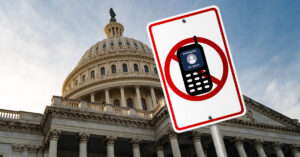Congress acted quickly this past spring to enact legislation that assists borrowers with the crushing challenge of meeting their financial obligations during the coronavirus pandemic. In doing so, lawmakers significantly altered the face of lending relationships, creditors’ treatment of borrower defaults and foreclosure litigation in general.
Although attention has justifiably focused on providing immediate, short-term relief to consumers who are facing mostly temporary income reductions or job losses, less consideration has been given to the long-term effects of these relief efforts. If there is one thing that the 2008 financial crisis should have taught the mortgage industry, however, it’s that there needs to be some long-term perspective and planning.
As of this past August, 3.9 million homeowners were in active forbearance, representing 7.4% of all U.S. mortgages and $852 billion in unpaid principal, according to mortgage data company Black Knight. Mortgage originators will want to keep an eye on the disputes arising over these cases in the coming months and years.
Ripple effect
A cornerstone of the federal Coronavirus Aid, Relief and Economic Security (CARES) Act is the moratorium on foreclosures and evictions, as well as the corresponding forbearances provided to affected borrowers of federally backed loans and loans purchased by the government-sponsored enterprises (GSEs) Fannie Mae and Freddie Mac, which last up to 360 days based on the borrower’s requests. These provisions have resulted in a trickle-down effect in various state courts.
Many servicers of nongovernment mortgages have followed the lead of their counterparts and voluntarily extended many of these protections to their loans as well. For servicing companies that have not chosen this path, it’s not hard to question how sympathetic a court might be in pushing ahead with collection litigation in light of the current environment.
There has already been confusion about the application of CARES Act protections, as well as challenges to the act’s scope. Initially, when some creditors took the position that the entirety of missed payments were due upon completion of the forbearance plan, the GSEs immediately addressed the statutory void by rejecting this notion, a position almost instantaneously adopted by nongovernmental servicers as well.
There is still ambiguity, however, as to what is required upon conclusion of the forbearance period. Disagreements about the calculation of the amount due, the calculation of interest and the accrual of legal fees will undoubtedly continue long after the public health emergency ends. Disputes will undoubtedly come into play in the calculation of judgment debts and the actual causes of loan defaults, particularly in situations where documentation is vague, confusing or absent.
Similarly, while at least one federal court has rejected the notion that the CARES Act contains a private right of action that allows a borrower to file suit under its provisions, utilizing a violation as a predicate act to — among other things — make a claim under a state’s consumer protection act appears to remain a distinct possibility. In this regard, the strict compliance of lenders with a statutory scheme that was hastily enacted in the face of an immediate financial crisis is critical, yet it is likely inherently elusive given the legislation’s broad scope (and arguably nebulous provisions and applications). Significantly, statutory mechanisms such as Connecticut’s Unfair Trade Practices Act may provide a vehicle for any perceived mistreatment of a borrower during this highly sensitive period in the lending relationship.
Delayed resolutions
And what will happen, for example, when a lender ultimately forecloses on a loan that was impacted by a pandemic-related forbearance agreement? It seems likely that the parties’ history of discussions, the details of the forbearance, and any alleged or implied promises made to borrowers in connection with such forbearances (or other loss-mitigation options) will be the subject of defense arguments and possible counterclaims in foreclosure cases.
At a minimum, these topics will likely be subjects of intense discovery in contested foreclosure cases and may threaten a lender’s ability to achieve early disposition in what would otherwise be a straightforward foreclosure action. Prominent in the foreground, of course, will be a borrower who is likely to face a highly sympathetic judge with (in most jurisdictions) significant equitable powers, meaning there will be considerable leeway in determining how to remedy wrongdoing.
Similarly, although some clarity has been provided as to the lenders’ obligations relating to credit reporting during the forbearance period, lapses will inevitably occur that result in credit claims and/or defenses. These issues won’t be easily resolved and, in fact, may provide fodder for the litigation of disputes in connection with loan defaults.
Likewise, it seems a virtual certainty that efforts to extend and expand the role of certain legislation, such as Connecticut’s foreclosure mediation program, will take place. Although the use of these programs had waned once the bulk of borrower defaults caused by the 2008 housing crisis had cleared the court system, many are slated to sunset and it seems almost inevitable that there will be a resurgence of these programs to address borrower defaults. It should not go unnoticed that, whatever their merits and ultimate success for disposing of a large number of cases, the programs inevitably delay the resolution of a broad swath of cases.
The proverbial silver lining, if there is one, is that the mortgage industry has some history from the previous recession to educate and serve as a guide for navigating the current crisis.
Path forward
The proverbial silver lining, if there is one, is that the mortgage industry has some history from the previous recession to educate and serve as a guide for navigating the current crisis. The 2008 financial downturn and wave of borrower defaults that accompanied its aftermath are, in fact, a useful tool to address the present circumstances.
The creation of various federal relief programs, the formulation of state-court foreclosure mediation programs, and the expansion of legal rights to borrowers in foreclosure and collection cases were demanded by the practical and political realities of that moment, especially since many of the financial institutions that were negatively impacted were viewed as the cause of many problems. In fact, until shortly before the coronavirus pandemic struck, a court’s pendulum was often predisposed to swing toward borrowers while lenders often found themselves facing the onus of swinging the pendulum back toward the middle.
The current pandemic, of course, has much different origins. Even the most virulent critics of banks cannot reasonably attribute the anticipated wave of loan defaults to the actions of lenders, nor can borrowers possibly bear the consequences of events clearly beyond their control. Although few would argue with the need for real and significant relief, it seems equally clear that a one-size-fits-all approach cannot work either, particularly since many cases dating back to the 2008 financial crisis are still being processed in the court system.
One thing that legislators and regulators should keep in mind before creating new relief efforts is that they may already have the tools available to address the present crisis — and that courts have become adept at using them. Which of these tools they utilize, and whether the approach from the Great Recession and its aftermath fits the present situation, are likely to be the subject of intense political debate going forward. If one thing is clear, however, it is that courts will eventually be quite busy sorting it out. ●
Author
-

Brian Rich is a partner at the law firm Barclay Damon. He regularly represents some of the world’s largest banks and financial institutions as well as local and regional clients. He handles a variety of business and commercial disputes, including contract claims, real estate litigation, contested commercial and residential foreclosure actions, mortgage resolution, unfair business practices actions, and fraud and lender liability claims. Reach Rich at (203) 672-2670 or brich@barclaydamon.com.
View all posts






